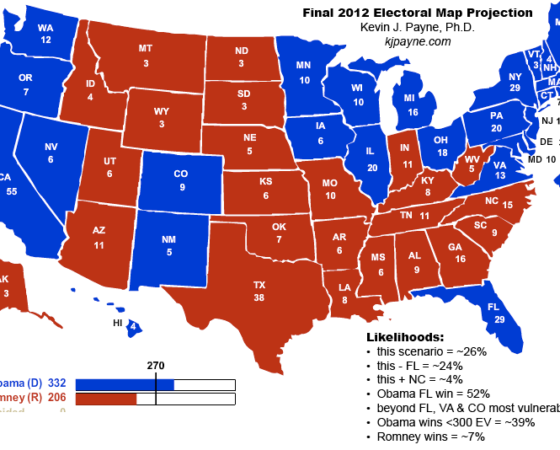
In the days leading up to the 2012 Presidential Election, I posted my Electoral College predictions and analysis to my Facebook stream. As social scientist and a data geek, I’ve run statistical election predictions since 1996. This time, I used it as an opportunity to field test some new statistical modeling techniques I’m developing for my company, DART Research, Inc. Most of those elections weren’t especially close, but this election was widely touted in the press as a “horserace.” The only catch is, that’s not what the data said. Ever.
This election cycle was a cautionary tale against wishful thinking. Some say that “you can make the data say anything you want.” That’s not true. While data are open to a degree of interpretation, they can only seem to say “anything” if we, as the audience, are unwilling to use our critical judgment or educate ourselves in the basics of data interpretation. That’s not as daunting as it seems — but it is difficult, in the sense that we have to practice seeing the world as it is and not as we would like it to be.
In the three days before the election, my scenario #2 (above) seemed slightly most likely. However, by the time the final batch of state poll results were released, Florida was trending toward the President’s column. Therefore, my final projection, posted on election morning, called for a 332 to 206 Obama win in the EC.
Several non-partisan data analysts managed to reach similar conclusions, including: Nate Silver, Votamatic, the Princeton Election Consortium, and Election Projection. What’s more, while all of us built our models from the state level up with much less emphasis on the national poll numbers (the only way the matters for the Electoral College), we each used some different analytic techniques.
The important lesson for all of us is that our best intentions can lead us astray, only to be blindsided by reality (which doesn’t care about what we want to happen). But better science and better data can be the foundation for all of us to make better decisions in our enterprises.
